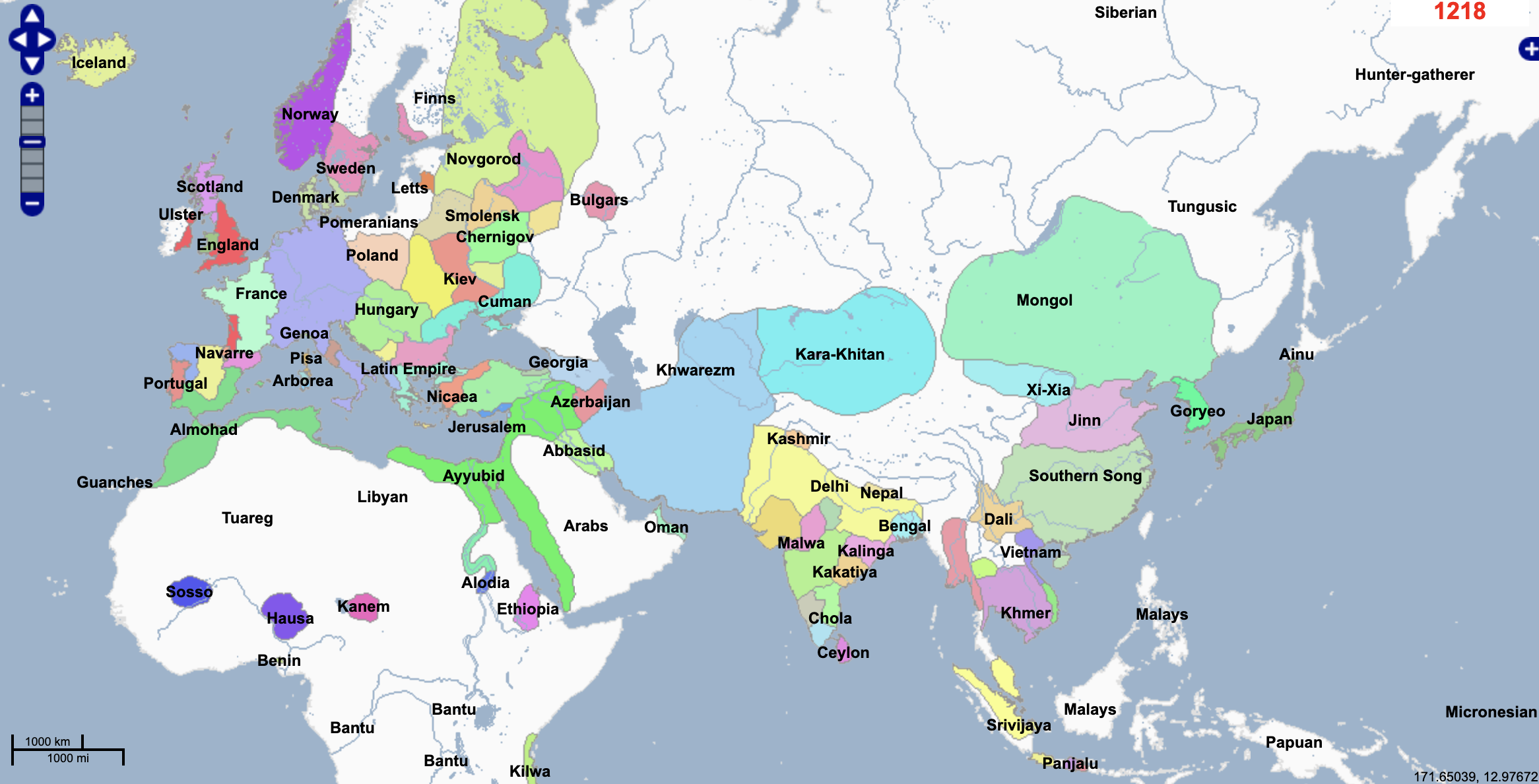
MongolMUN
Topic
Proposal
for
Establishing Borders to Ensure Supremacy and Prosperity of the Mongol Empire
Prior
to
1200 C.E., the borders across Eurasia were quite dynamic, changing as empires rose and fell. Shortly after this time the supercontinent experienced a chaotic period of instability unlike any other moment in history, with the rise and conquest of the Mongols. It is now 1218, and incumbent upon this Delegation to establish the Eurasian borders in order to ensure the present and future security of the continent under Mongol rule. Considerations must be made regarding a litany of factors - including culture, population, natural resources, physical terrain, and historical land ownership – in order to maintain control throughout Eurasia. Within these borders, stable khanates must be created in order to maintain peace and prevent possible future aggression. A pragmatic border system, as well as the establishment of sovereign governments are essential for a secure and prosperous Mongol Empire.
MongolMUN
Eurasia in 1218

Eurasia
in 1263

Task
You are a member of a delegation representing a particular son of Genghis Khan. Your delegation must create an original boundary system for the regions of Eurasia you realistically plan to conquer. To complete this task, you will create a document containing your region's position on the adjustment of the Eurasia’s boundaries, and an original map depicting the khanates.
1)
Research: Your first responsibility is to research the Mongols, as well as Eurasia during this time period This will allow you to represent your assigned delegation intelligently, and to act “in character” even when specific information about a topic may not be available (e.g. what types of governments exist in your region? What types of problems have occurred in your region's past that may become a problem?, etc.).
2)
Division of labor: Secondly, you must familiarize yourself with the continent of Eurasia through resources, maps, and data, and not solely information on whatever region your delegation wishes to control. You must then establish criteria by which you will prioritize the delimitation of the boundaries of Eurasia. You may consider using the acronym "SPIRE" in order to examine Eurasia and the Mongol Empire:
- Social (and demographic): population density, population totals, age cohorts
- Political: government styles, established tribal kingdoms, access to navigable rivers
- Ideological (and cultural): languages, religions, ethnicities
- Regional (and natural): physical landscape, climate, access to major oceans or rivers
- Economic: mineral access, arable land, preventing landlocked states
To Summarize
| The
basic steps you and your fellow delegates must complete: | |
| | · Designate the duties of all delegates in your group. |
| | · Research Eurasia during this time period, the essentials of the Mongols, your respective region, and the general goals and inclinations of ALL other delegations. |
| | · Analyze maps and data to familiarize yourself with Eurasia. |
| | · Establish a hierarchy of priorities by which you will create an original boundary system for Eurasia (e.g., khanates, access to water, mineral wealth, language, religion, etc.). |
| | · Create a position paper articulating your region's goals and priorities with respect to the issue of establishing khanate boundaries across Eurasia. |
| | · Construct a detailed map of all new khanates and/or countries proposed by your delegation's position paper. |
| | · Make an alphabetized bibliography that lists the sources of all information used by every member of the group. |
| | · Include a section describing the amount of work each individual had contributed to the overall project. |
| | · Submit your delegation's original position paper, and map to your instructor. |
Guide
to
Position Papers
Once
you
have completed your preliminary research, you are ready to write your position paper. A position paper is a brief document that summarizes and organizes your research, and is valuable in a number of ways. The staff and delegates read the position papers and summarize them in order to gauge what the committee will be like and to see which delegates have done a good job preparing for the conference. You also have a chance to find out who is likely to support your ideas.
Writing
a
position paper makes you think about the information you have researched and helps you to express ideas concisely and clearly, making you better prepared for the conference. Not every piece of research needs to fit into your position paper; you only need to summarize the most important information. Remember, accuracy is paramount.
Each
position paper has three basic parts: background of the topic and your country’s national interests, your country’s position and national policies, and your opinion on potential solutions and resolution components.
A.
Background
of the Topic:
· Your first paragraph should be an introduction or brief, general history of the topic. Be sure to highlight dates of important treaties, events, and international actions pertinent to the topic.
· National
interests
are what a khanate would like to see happen in the world (e.g. Tolui, the youngest son of Genghis, believes the territory within and around Persia to be his rightful claim).
· These
interests
are not necessarily subject to compromise, but instead generally idealized goals or methods of solving specific problems.
B.
Position
Taken by the Delegation:
· The
second
paragraph of your paper should delve into how your delegation relates to the issue at hand, and should detail the position of your khanate’s government. Use quotes from your leaders, statistics, resolutions your respective son has signed or ratified, and how the policies of other khanates may affect your position.
· Discuss
your
respective son’s past policies and actions concerning the topic as well as the justification for these policies that secure your interest (e.g. According to Mongol custom, the youngest legitimate son is entitled to inherit his father’s land).
· These
policy
positions are usually open to negotiation. This is the most important part of your research.
C.
Possible
Solutions:
· Finally,
you
will end with a brief summary of your delegation’s goals and approach for the conference. This should also include possible solutions that your khanate would consider integral to a successful resolution on the topic.
· Although
these
sections provide flexibility, you need to keep in mind the interests of your respective son and his future nation. Possible resolutions must be consistent with these national interests and current national policies (e.g. Tolui is willing to agree to a fair division of territory among his legitimate brothers, however, he will not support any resolution that denies his just claim to Persia).
· Solutions
proposed
in this section do not have to be overly detailed due to fact these events have not yet occurred, as well as the limited space in the position paper format.
Sample
Position Paper
Team
Jochi (for a different [modern] topic on nuclear test bans)
A. The nuclear test ban issue has been the first item on the agenda of the Conference on Disarmament since 1978 with good reason. In 1963, the United States, the United Kingdom, and the USSR entered into the Partial Test Ban Treaty (PTBT), which prohibited testing in the atmosphere and underwater. In 1974, the United States and the USSR entered into the Threshold Test Ban Treaty (TTBT), which placed an upper limit of 150 kilotons on nuclear tests.
The
next
logical step, a comprehensive test ban treaty (CTBT), has been long overdue. Nuclear weapon testing allows the arms race to continue and even escalate. The implementation of a test ban would slow down the development of new nuclear weapons and thereby slow down the arms race. Furthermore, a CTBT would not, as some states have claimed, threaten the stability of the policy of nuclear deterrence, on which both superpowers rely. In fact, a CTBT would maintain stability by preventing innovations and developments, which could potentially give one nuclear state a unilateral advantage. Moreover, the increasing use of super-computers has essentially eliminated the need for actual testing.
B. The Republic of Sierra Leone believes disarmament to be crucial for the maintenance of worldwide security and considers a nuclear test ban to be an important step in the process of reaching that goal. Sierra Leone is not a nuclear power nor does it aid other countries in producing nuclear weapons.
Our
policy
in the past has been to work diligently toward a Comprehensive Test Ban Treaty. We wish to accomplish this goal through negotiation in the Conference on Disarmament. In accordance with this policy, the Resolution 485 banning nuclear testing in Africa and Resolution 781 banning nuclear testing in Southeast Asia received wholehearted support from Sierra Leone. Furthermore, our government received glowing reports from the international press for our stance on the issue. The African Journal wrote that “To maintain the fundamental principles of Africa, the UN needs more nations like Sierra Leone” (Volume 48, 1993, pp. 12).
C. The Republic of Sierra Leone supports the following proposals for a nuclear test ban treaty: The treaty must be a comprehensive and permanent one. Although Japan’s proposal to have a progressive lowering of the threshold limit until it reached zero is an interesting idea, not only does this legitimize nuclear weapon testing, it also delays a true resolution of the problem. In addition, it gives the nuclear states a greater opportunity to escape their obligations through inevitable loopholes in the treaty.
Although peaceful nuclear explosions could potentially bring about beneficial results, the nearly insurmountable difficulty in differentiating between nuclear tests for weapons and nuclear tests for peaceful purposes makes such a distinction infeasible. The proposal that a state must provide the Secretary-General with all relevant data about the planned explosion is laudable, yet proper assurance of the peaceful nature of a test would require a degree of monitoring to which most nuclear states would not agree.
States can rely not only on all national means of verification, which are consistent with international law, but also an international verification system. Current seismic monitoring systems, such as the Norwegian Seismic Array (NORSAR), are sufficiently advanced to determine whether states are complying with a CTBT. In addition, the 1984 experiment involving the World Meteorological Organization/Global Telecommunications System (WMO/GTS) illustrates the viability of an international seismic network. As per the Ad Hoc Group’s report, Sierra Leone is in favor of an international network of seismic monitoring stations, which would send their data to International Data Centers (IDCs) for analysis. These IDCs would automatically give out type I data (basic information) with type II data (data subjected to more advanced analysis) available upon request. Of course, even after the conclusion of a CTBT, there should be further research into the development of even more sensitive and accurate seismic monitoring equipment and analysis techniques. If the test ban treaty involved the gradual reduction of the threshold limit, then that limit should reflect current seismic monitoring technology. In addition, on-site inspections should be allowed.
Regarding compliance, a test ban treaty is of such paramount importance that violators should be punished. Yet the fact remains that embargoes would most likely have little if any effect on most nuclear states. Perhaps compliance measures will eventually rely on first convincing the superpowers, and any other nuclear states, to enter into a CTBT and then getting the superpowers themselves to ensure that their allies abide by the treaty.
History:
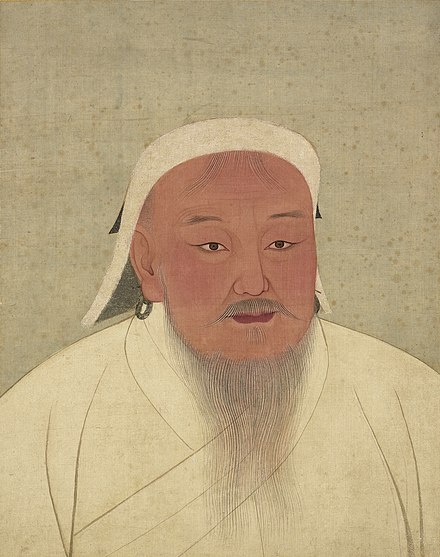 Between
1206 and 1227, Genghis Khan, a native of present-day Mongolia, created the largest contiguous empire in human history. The Mongols first emerged a powerful tribe around 1130 but then were scattered into clans after being defeated by the Tartars in 1160. These clans experienced large amounts of conflict and therefore the Mongols were kept weak and divided. One of the clan leaders, Yesugei, in 1167, had a son named Temujin. This son was deserted by his tribe, along with his mother and siblings, at nine years old when his father was poisoned and died. At the age of 16, he enlisted the help of his father’s old friends when his wife was captured, and he used these allies to become a well-known, powerful figure on the steppes of Mongolia. He quickly became the head of the family and was even suspected of killing one of his stepbrothers who stole a fish from him. With his childhood friend, Jamugha, he was able to take control over most of the Mongol clans. Around 1206, after some setbacks, Temujin took the title Chingis Khan (Genghis Khan). This made him the Great Khan or the supreme leader of all the Mongol people.
Between
1206 and 1227, Genghis Khan, a native of present-day Mongolia, created the largest contiguous empire in human history. The Mongols first emerged a powerful tribe around 1130 but then were scattered into clans after being defeated by the Tartars in 1160. These clans experienced large amounts of conflict and therefore the Mongols were kept weak and divided. One of the clan leaders, Yesugei, in 1167, had a son named Temujin. This son was deserted by his tribe, along with his mother and siblings, at nine years old when his father was poisoned and died. At the age of 16, he enlisted the help of his father’s old friends when his wife was captured, and he used these allies to become a well-known, powerful figure on the steppes of Mongolia. He quickly became the head of the family and was even suspected of killing one of his stepbrothers who stole a fish from him. With his childhood friend, Jamugha, he was able to take control over most of the Mongol clans. Around 1206, after some setbacks, Temujin took the title Chingis Khan (Genghis Khan). This made him the Great Khan or the supreme leader of all the Mongol people.
Genghis
was a brilliant strategist and forced people to listen to him. This was accomplished by his aptitude for psychological warfare and creating high amounts of terror among his opponents. However, he was also a compassionate leader and sought surrender wherever possible, not wanting to perform violent acts with no justification.
Military
Strength:
Around
1187, Genghis decided to unite more of Mongolia after his longtime friend, Juamugha, attacked his troops, and
in order to do this he created an army of more highly trained warriors. This army was mounted on horseback and capable of moving 60-120 miles per day which was unheard of for any army of comparable size. This was possible partially because each Mongol warrior maintained three or four horses which they could switch between over long journeys. This provided a large advantage in being able to wage quick, accurate strikes against enemy forces and cover large amounts of distance in minimal time. The army was also organized by a simple, traditional decimal system which consisted of groups of tens, hundreds, and thousands of men regardless of ethnic origin. This division of troops contributed to much of the Mongol military success as orders were able to be delivered to specific units efficiently and rapidly. Even though they were a highly mobile military, the Mongols were still skilled in the art of siege warfare and could construct simple yet effective machines such as trebuchets and catapults. A crueler tactic employed by the Mongol army during battle was the kharash, which entailed gathering residents or soldier previously defeated. This crowd served as a human shield which would push forward to take the brunt of the enemy long-range weapons and to break down obstacles so the Mongol army could move forward unimpeded.
In 1206, at age 40, Genghis Khan began looking toward China. His gathering of the Mongols to prepare for this venture was the largest in history. In 1210, he sent envoys to the Jin Empire. The envoys were captured and killed. This was an unforgivable thing for Genghis Khan and he decided to invade in 1211 after meditating and saying that he was told by the gods that it was the right thing to do. His forces easily got past the Great Wall and laid waste to most the of the Jin Empire in northern China.
Campaign
in the Middle East (Current Issue):
After
campaigns
in northern China, he sent envoys to the ruler, or Shah, of the Khwarezmid Empire, Ala ad-Din Muhammad, in the Central Asia/Persia area. In 1218, the envoys were slaughtered there as well. At the time of this committee, there is no clear successor of the Mongol Empire should something happen to Genghis Khan, and decisions are being made regarding what to do regarding the slaughter.
Political
Landscape:
When Genghis first came to power, there was no Mongol capital, empire, or even nation. The Mongols as a group living on the steppes were viewed towards the bottom of the social order. However, this quickly changed as Genghis made alliances and conquered other groups. He carefully vetted his allies and chose them accordingly. In the regions Genghis conquered, he would replace the elite with Mongol rulers to govern the conquered people but left everyone else in society as they were, promising to include them into his new rule if they paid respected his leadership. The men he selected for these roles had to be absolutely loyal to him.
Genghis’
overall
strategy of trying to assimilate the local groups into the Empire was revolutionary for its time period. Because the empire’s vast expanse, it featured a significant amount of diversity, which impacted how Genghis had to rule and create laws. When he became Great Khan, Genghis believed he had no room for a traditional clan and the ties it brought along.
Values
of Loyalty:
Genghis
emphasized
his vision of absolute loyalty from his subjects to himself. As Great Khan, he expected obedience and allegiance from all classes. One of the myths about his rise to power to explain his decisions regarding diversity among his troops involves having a “multiethnic, multicreedal oath of brotherhood [which] would come to symbolize the form of society” which Genghis wanted to create. This was the idea behind the “arbans,” the groups of ten in the army, which were commanded to be loyal to one another regardless of their ethnic or religious backgrounds.
Yassa:
The code of law created by Genghis Khan and adopted throughout the empire was called Yassa. This code necessitated severe punishments for minor crimes, strict obedience to Genghis Khan, and a binding together of the nomad tribes. Because of such strictness, the Mongol Empire was seen as a safe place and the army was extremely disciplined. Because of Yassa, leaders of the empire, such as chiefs and generals, were elected based on merit—crimes such as thievery were banned, and religious intolerance was prohibited. This was the first set of written laws used by the Mongols. As the Genghis Khan grew in power, there was a significant need for laws that the whole empire would have to follow. The strange aspect to this code of laws was that the physical script was supposedly only known to and read by the royal family because there was some semi-sacred or magic view of the text.
Potential
Punishments:
Two of the most common crimes in the steppe were the “stealing of animals and the kidnapping of women.”14 Under
Genghis’s rule, stealing a horse was punishable by being “cut into two parts.” Beheading was the most common method for killing someone who was not of noble blood, and even minor offenses such as not picking up something someone dropped could be punishable by death. Another is examples is that a hunter could be beaten with sticks or put to death if he let an animal escape during a community hunt. However, if someone was favored by the Khan, they had multiple strikes before being punished.
Effect
on Economics and Trade:
The Mongol Empire created the first direct contact between East and West and allowed a new flow of technology, people, trade, etc. between different parts of the world
which
had no contact before. A postal system called yam was created. This entailed a system of relay stations where riders could pass along messages, rest, and resupply. Heavy taxes were laid on everyone except artists, lawyers, and teachers. During his reign, the Mongols essentially controlled trade along the Silk Road. Genghis Khan’s laws were enforced so well within the empire that it later created a time referred to as “Pax Mongolica” (Mongol peace) which allowed for more open commerce and communication. This peace was parallel to the “Pax Romana” which was the time of the Roman Empire’s minimal expansion and relative peacefulness
Kurultai:
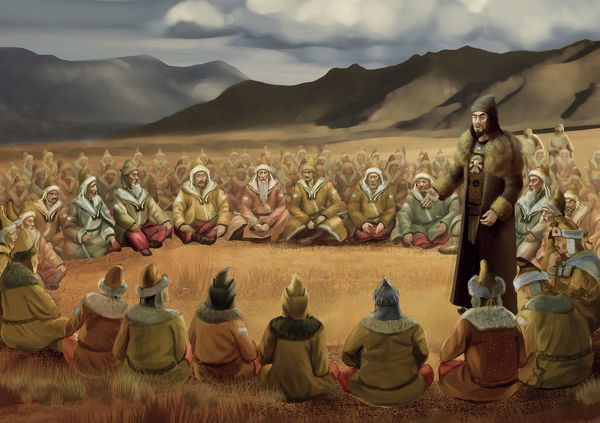
The kurultai was the gathering of Genghis Khan and his advisors in order to make decisions for the Empire. These meetings were often held as a form of war council. The root word “khurim” in Mongolian
means a “feast” or festive gathering, but today stands for an event more like a wedding. This body of counselors was modeled after both Mongol and Chinese tradition. The Khan held the power of final decision and was heavily involved in the process, but would delegate some tasks to those he trusted.
Concerns
of the Committee:
What will happen when Genghis Khan cannot find the elixir of life he so adamantly seeks and he passes away leaving a number of possible successors? That is one of the issues which this committee is going to resolve. There needs to be a clear establishment of succession. Genghis Khan had several children who could be suitable Great Khans after him, but he also had many capable generals, ministers, and even his wife who may all qualify for the position. This committee can decide what is best whether the traditional passage of rule based on lineage is applicable or if Genghis’s ideology of those who are best suited for a position should be given it.
There
are also many issues that can plague an empire of such a vast size. A system of logical steps needs to be established for how problems are to be dealt with and then it needs to be initiated. Certain policies may need to be implemented in order to continue the growth of the empire. The current system of communication and trade throughout the empire may need to be reexamined or perhaps put to different purposes.
However,
the most pressing matter is how we will wage war and be victorious on the western front of the empire against the Khwarezmian
Empire, while also being cautious of the eastern front and the remnants of the Jin Empire. The outcomes from how we engage with both these foreign empires may have lasting impacts on the future of our empire. We must understand what resources will be required and what strategies will be used so that they are deployed efficiently.
This all must be done while maintaining your roles as delegates. Your positions require maintaining not just military power, but also an unfaltering loyalty to the Khan and a good image for the people of the empire to see. This will not be an easy committee, and much like life on the steppe...only the strong will survive. Think like Genghis Khan using your intellect, loyalty, and persuasive skills and you will conquer this committee.
Things
to keep in mind:
1.
What the current Empire looks like,
2.
What you, as leaders of the Empire, want it to look like in the future,
3.
What kinds of issues may be arising now or in the near future within the Empire and outside of the Empire,
4.
Who is going to rule where - when Genghis is no longer able or willing.
Key
Members of the Imperial Council:
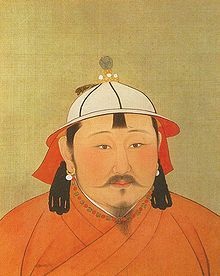 | Jochi Khan – Genghis Khan’s eldest son As Genghis Khan’s first son, Jocji was the first in line to succeed his father should Genghis die in battle or be eliminated by internal political enemies. Recently, his true paternity has been called into question given that his mother was given as a spoil of war to another man following her abduction shortly after she and your father were married. Jochi frequently goes on his father’s military campaigns and commands his own troops while on such campaigns. As one of Genghis Khan’s sons, he is entitled to his own kingdom within the Mongol empire to rule over, with his respective territory being the western portion, which is known as the Golden Horde or Kipchak Khanate. However, while being the heir of his father, they sometimes have disputes about various issues and courses of action his father is planning to implement or take. |
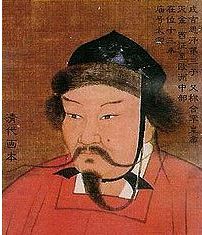 | Chagatai
Khan – Genghis Khan’s second oldest son As the second son of Genghis Khan, Chagatai also is in line to succeed his father should something happen to him and his brother Jochi. There are some in the empire who believe that he should be the rightful heir to his father citing Jochi’s questioned paternity. Like your him, Chagatai also accompanies his father on his many military campaigns, and commands his own troops as well. Chagatai was also given the responsibility of being the Guardian of the Mongol law code (“Yasa”), which he strictly enforces. Like Jochi, he also has his own kingdom that he presides over within the empire, which consists of Turkestan, the Tarim Basin, western Tian Shan, the Ili river valley, Kashgaria, Turfan and Kucha in China, and Transoxania. Together, these lands under his control would become known as the Chagatai Khanate. |
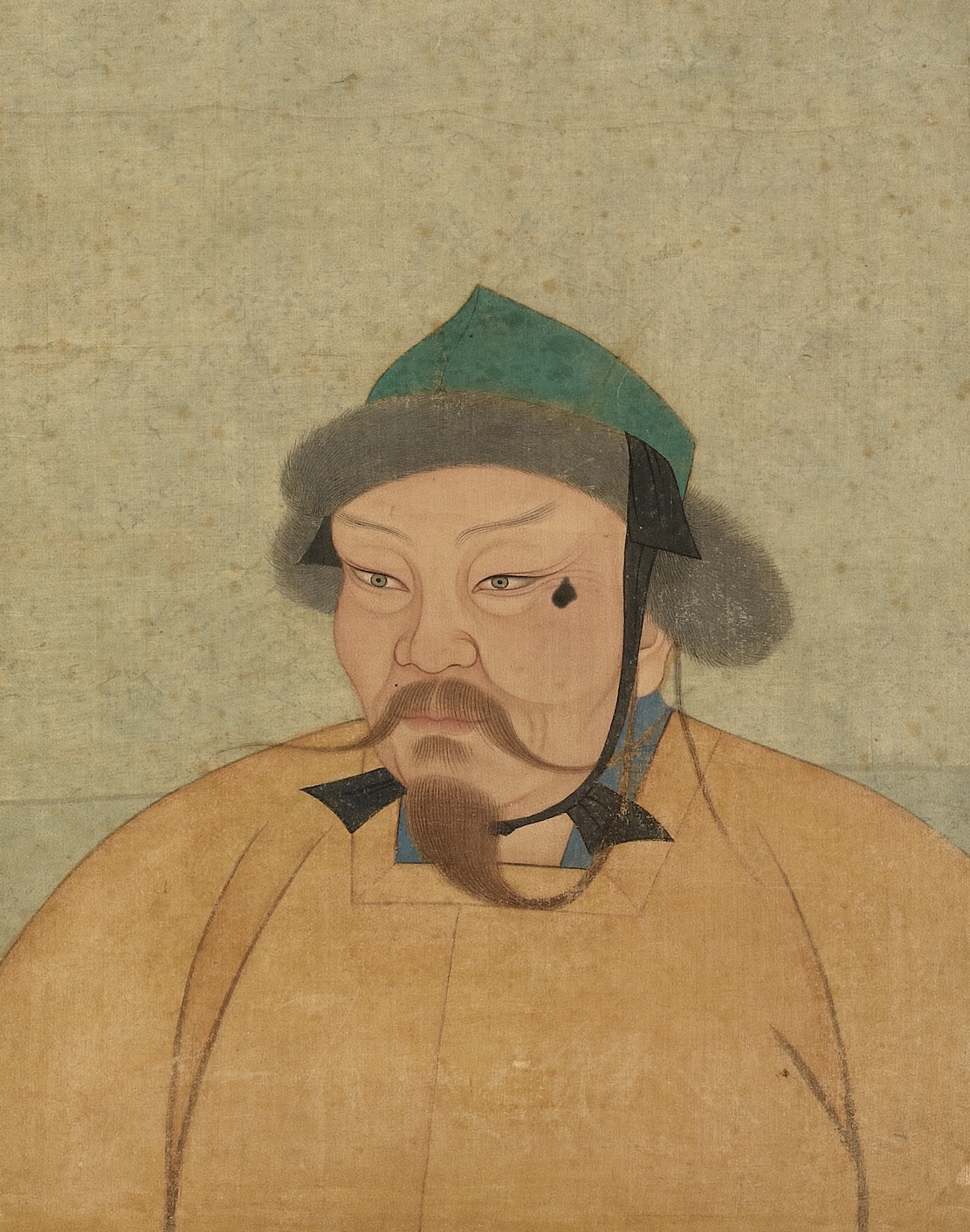 | Ogedei Khan – Genghis Khan’s third oldest son Being a rightful Khan born from Borte, Ogedei also is in line to succeed his father should something happen to him and the two older brothers. It is rumored that Ogedei is his father’s favorite son, and that Genghis would like Ogedei to succeed him upon his death. Similar to the other brothers, he also accompanied his father on his military quests, and was often most noted for his willingness to listen to the generals. In the locations that he has been responsible for capturing, Ogedei had been able to establish a stable political and economic system, and actually lay the groundwork for increasing trade with Europe. He has also been given a certain portion of the empire to govern, with his portion consisting of the Emil and Hobok rivers, or what is western China. |
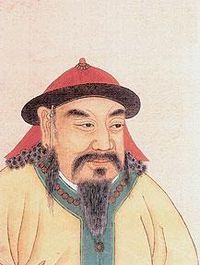 | Tolui Khan – Genghis Khan’s youngest son Tolui is the youngest of Genghis’ legitimate sons. If his father follows Mongol custom, Tolui should be the rightful successor to him. Like his brothers, he also accompanied his father on military campaigns to conquer those who pose a threat to the Mongol empire, and Tolui also controlled a certain portion of the empire, with his respective area of control being the Mongol homelands. Aside from being an effective warrior, he is known to be an alcoholic. |
|
|